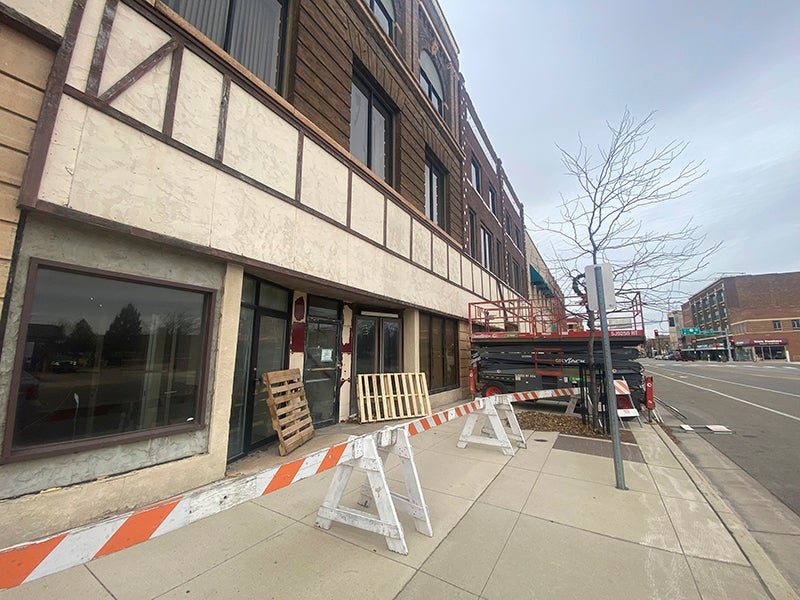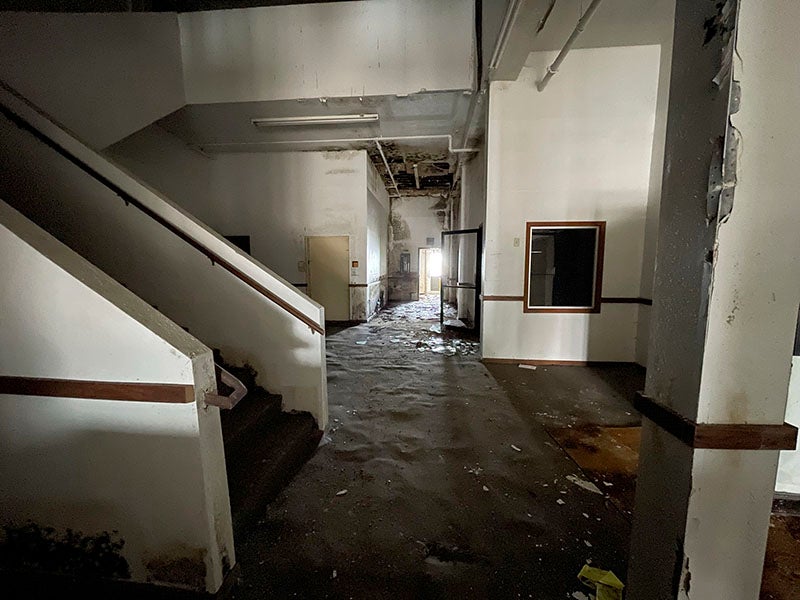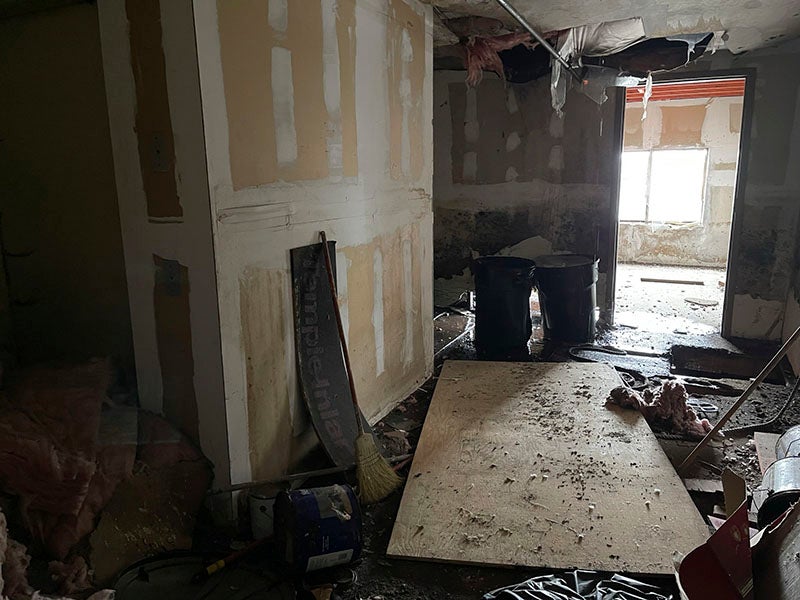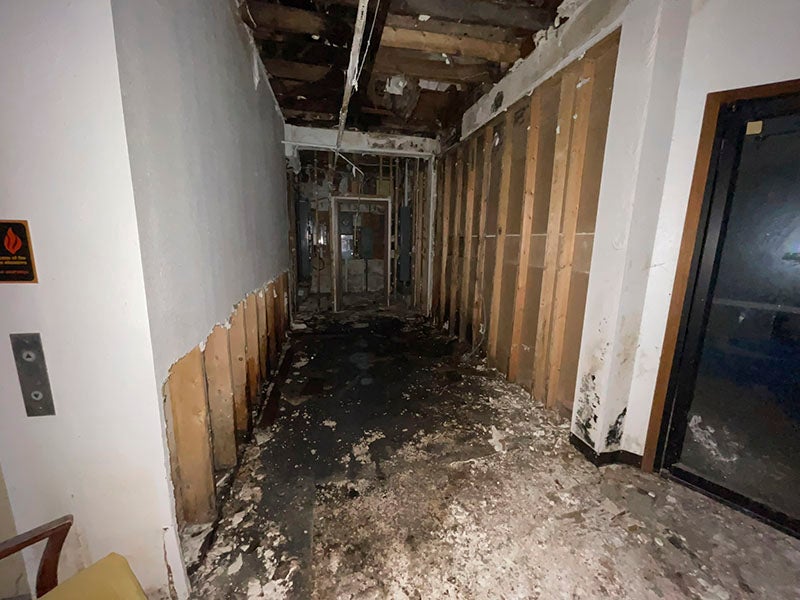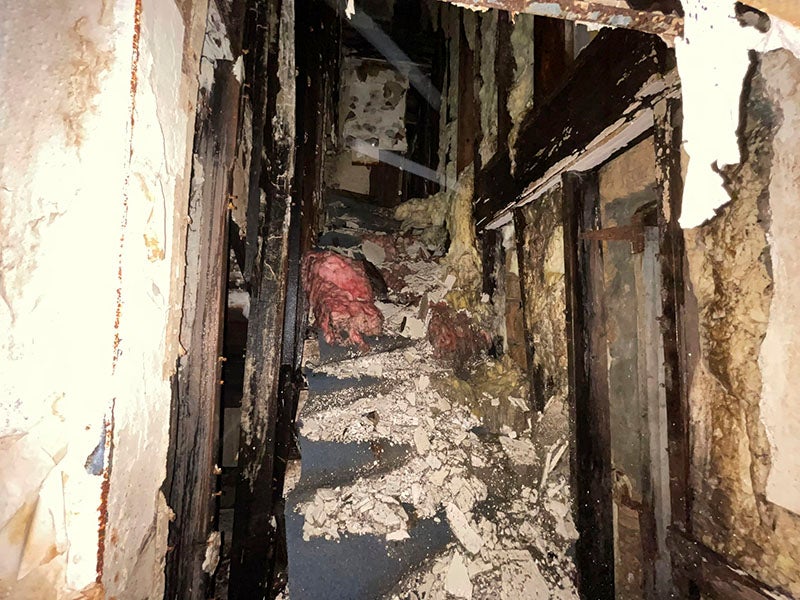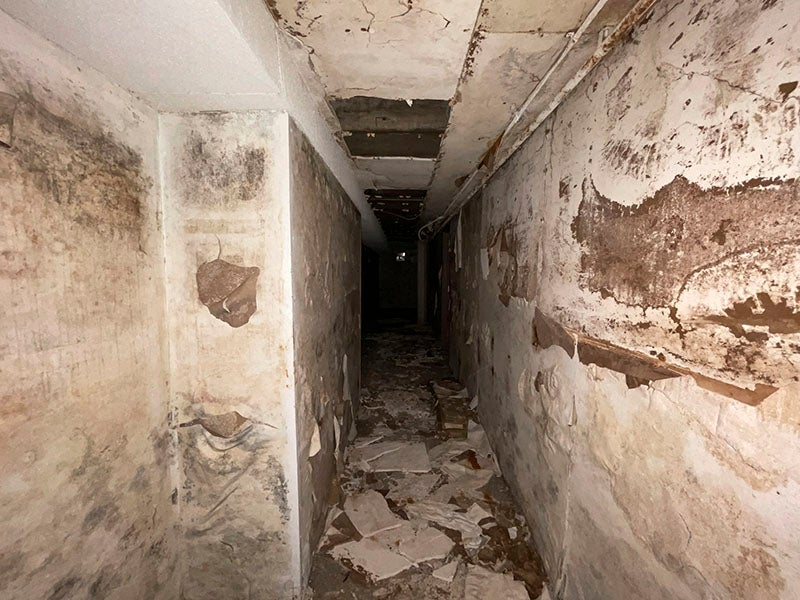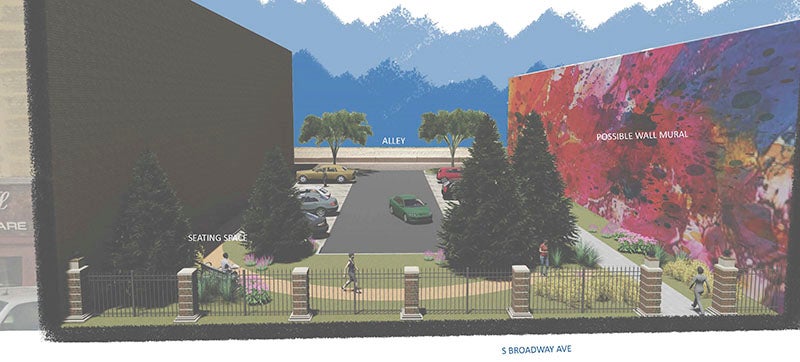“Structurally deficient, unsafe and uninhabitable”: City proposes demolition of 2 downtown buildings
Published 1:10 pm Friday, March 11, 2022
|
Getting your Trinity Audio player ready...
|
With public safety at risk because of collapsing structures on the 300 block of South Broadway, the city of Albert Lea is proposing to demolish two buildings in the historic district.
Because the buildings, at 324 and 332 Broadway, are listed on the National Register of Historic Places, their demolition requires an environmental assessment worksheet, which is open for public comment through April 14, according to the city. The purpose of the worksheet is to determine whether a more in-depth environmental study is needed.
“Unfortunately, the buildings are too far gone to save,” said Wayne Sorensen, building official for the city. “They are structurally deficient, unsafe and uninhabitable.”
Sorensen said the city acquired the building at 324 Broadway under tax forfeiture last year and acquired the 332 building in 2015.
He said problems with both buildings started with failing roofs, and on top of that, being without heat for so long compounded the problems.
The buildings are in severe disrepair, with collapsing interior floors and other structural damage. Pieces falling off the exterior pose a risk to pedestrians on the sidewalk below.
Sorensen said stairways on the back of both buildings have partially collapsed, and last summer an entire room fell into the basement in the 332 building.
The buildings have extensive water damage from rain that continues through all floors, which in turn has generated extensive mold. There are also broken windows, as well as evidence of widespread pigeon population throughout.
He said if money was no object, the buildings could be saved, but otherwise, he described it as “infeasible and irrational” to try to save and repair them.
“I’m confident anybody I took for a tour in there would turn and run,” Sorensen said.
The conditions of the building, as well as things such as the archaeological history, topography, soil condition and watershed information, are a few of the things included in the more than 30-page environmental assessment worksheet.
Sorensen encouraged the public to look through the document.
“If people avail themselves of the complete information available, I think they would agree,” he said, of the city’s proposal to move forward with demolition.
The history
The building at 332 S. Broadway was constructed between 1891 and 1899 and was known as the Nissen Block, originally housing the Nissen Hospital and doctors’ offices on the first, second and third floors. It was later converted for commercial and residential use, including a drug store, grocery and market, a jewelers, a furniture store, a music and optical company and a hobby and craft store over the years. Albert Lea Broadcasting Co., which operated KATE Radio, also was in the building on part of the second and third floors for a time. In the 1980s, the building was developed as part of the 300 Building and the storefront was merged into the neighboring property.
The building at 324 S. Broadway was originally constructed to house a hotel on the upper floors and businesses on the first. In the early years, it housed a music store, drug store, grocer, candy store and furniture store. Starting in the 1970s, it has housed a tavern and a beauty school. The last known occupants were the Cafe Cappuccino & Deli and Lutheran Social Services of Minnesota.
Sorensen estimated both have been vacant since the late 1990s.
The demolition process and what’s next
According to the city, the two buildings share walls with the Vitality Center to the north and former Broadway Theater building to the south, putting the neighboring buildings at risk of structural damage. Some of the demolition would need to be done by hand to prevent damage to the common walls.
The former theater building, at 338 Broadway, is owned by private individuals who are working with the city to assess the structural integrity of the building and repair its exterior. The Vitality Center, at 314 Broadway, which rents office space to several tenants, is owned by the city, along with the building at 310 Broadway.
The demolition would start with removing and disposing of hazardous materials, including asbestos. A general contractor would then remove the building materials with disposal in an approved demolition landfill.
“We are doing significant efforts to save the rest of the block and make sure this doesn’t go any further,” Sorensen said.
If proceeding with demolition, the long-term goal would be to sell the land for private development.
In the short term, the city is considering plans to improve the open space with a small park or a parking lot with landscaping. Both options would use exterior materials from the buildings to replicate some of the lost architectural features along Broadway. If a parking lot, vehicles would access it from the alley behind the remaining buildings.The goal would be to enhance the downtown and complement potential reuse of nearby properties.
“Leaving the buildings alone is not an answer,” said City Manager Ian Rigg. “We need to take action to protect the structural integrity of the adjacent buildings. Creating a gravel lot is not a good answer. We need to turn the space into an amenity.”
Rigg said the city has budgeted about $550,000 for demolition, hazardous material and potential infill of the parking and park area. However, with the unknown of the stability of the structure and neighboring structures, they cannot be 100% certain.
He is recommending the city use some of its American Rescue Plan Act funds to clean up and improve the site. The council has not yet made a decision on the final funding source or what to put in place of the two buildings.
“It is a safe guess most people recognize the structures are unstable and will have to come down,” Rigg said. “Because of how people can abandon such properties, it unfortunately will fall on the local tax payers for the cleanup. Prospects of a private investor fixing them up are unlikely. It did not happen five, 10 or 20 years ago, so we should not expect it now until the structure is down.”
According to the city, if the two buildings are demolished, Albert Lea would still have the largest historic downtown of its kind in Minnesota. The city says removing the buildings would support downtown revitalization by removing structures that are unsafe and uninhabitable.
View the environmental assessment worksheet
Copies of the environmental assessment worksheet are available for public review at the Albert Lea Public Library and the Inspection Department, 221 E. Clark St. Comments on the worksheet will be considered by the Albert Lea City Council in deciding whether more study is needed.
If finding no need for additional study, the city would likely then proceed with demolition this summer.
“I think it’s save to say we’re trying to save the whole block by taking down these two buildings,” Sorensen said.
The city would keep the public updated on traffic detours and other project impacts through news and social media.


